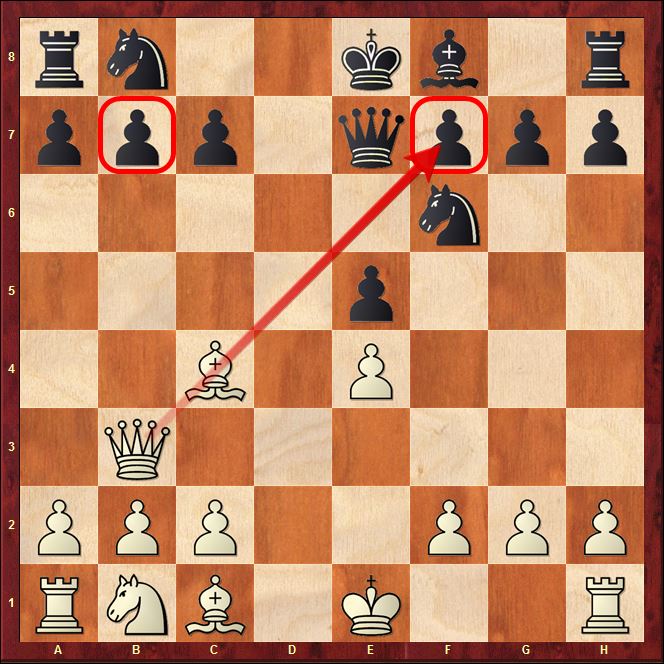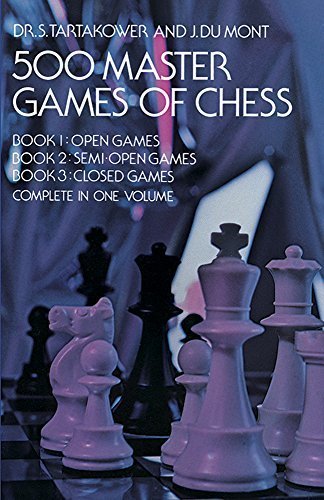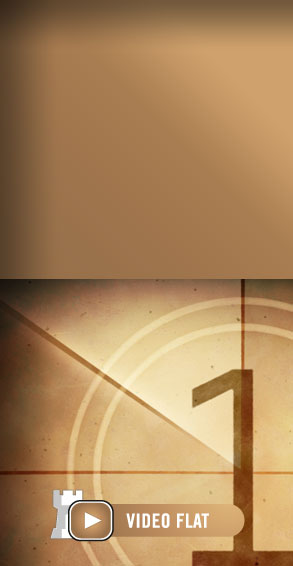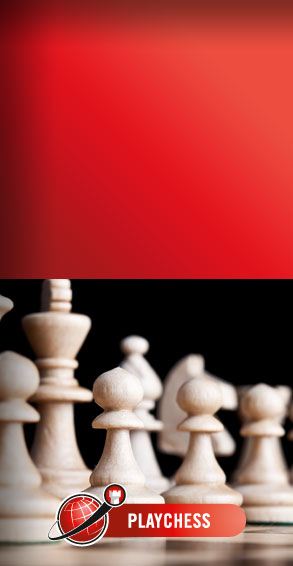Tactics with Tania
A review
This is the second DVD authored by IM Sachdev. The first was on how to improve one's positional game, and better understand and evaluate our games through positional concepts and the element she explained so well.

"Tactics" is likely the most used word in the chess world, and the secret everybody would like to master. I believe IM Sachdev chose the right approach to teach tactics. She has selected some very important classical games, and through them, she shows how a position can be conducive to the tactic themes we would like to implement in our own tournament games. While the first part of the DVD uses classical games we should all know, in the second part IM Sachdev uses her own games to show how tactics can be created during a game.
She also outlines what the most beautiful tactical games have in common: good development, harmonious interaction of our pieces, to use all our piece for attacking, to move them toward the center, etc.
The classical games used as examples are in my opinion the best. For example in the following position between Morphy vs Brunswick, Black just played Qe7 trying to protect f7 heavily attacked.

If you were White how would you continue? The question seems silly, since there is a pawn to grab on b7, but Morphy — and this is the immense instructional value of watching his games — wasn't a pawn grabber! He would develop all his pieces, even give material for the attack, and then begin to pound on the enemy position.
Learn about one of the greatest geniuses in the history of chess! Paul Morphy's career (1837-1884) lasted only a few years and yet he managed to defeat the best chess players of his time.
In the case of the diagram above, Morphy continued with 8.Nc3, instead of taking the pawn on b7. But I'd like to show you why this game is so great, because it gives us a lot of ideas to think about.

Black just played 12...Rd8, to defend the Nd7. And obviously White sacrificed and played 13.Rxd7. Now this brings up the question: is 13.Rxd7 a real sacrifice??
The answer is an obvious: yes! But please notice the pieces I have highlighted: the Rh8, and the Bf8. After 12 moves, they are still buried like in a tomb, so we can say that White gave a rook for a defensive piece, which was really important. He removed a defender, because the goal of a chess game is to give checkmate, Black in reality is playing with two pieces less, the Bf8 and Rh8 that are totally useless. If we would put two bricks in their place, they would have the same value.
IM Sachdev teaching skills shows up when she asks us to pause the video, and find how the game ended. Again, my little secret is the following: I placed the position on my chessboard, and gave myself 10 minutes, like in a tournament game, to find the way to win from this position.

As reviewer, I have the duty to be honest, and try to be precise, within the limits of my chess knowledge, which of course is a work in progress!

IM Sachdev has presented some beautiful games, for which I'm quite grateful. However during the third video, in the game Nimzowitsch vs Tarrasch 1914, around 5 minutes and 40 seconds, she says: "this concept of double bishops sacrifice in h7-g7 or h2-g2, became quite a concept, and this is the game which started it all."
I disagree on this point, because there is a very famous game, printed in many books, like 500 Master Games of Chess or even in Chessbase DVDs, like Andrew Martin's "Enter 1.f4 Bird's Opening!"
There seems very little room to create new opening ideas in 2010 and the creative competitor must work hard to find new approaches which help to win games. Enter 1.f4, Bird’s Opening! 1.f4 has hardly been given comprehensive coverage in the textbooks and on this new ChessBase DVD, International Master and Senior FIDE Trainer Andrew Martin examines this ‘last frontier’ of sound and original opening play.
They all commented this famous game, which I do have the pleasure to show you here. It has the double bishop sacrifice, in the same fashion of the game Nimzowitsch vs Tarrasch:
Instead this is the game presented by IM Sachdev, which is beautiful, but which doesn't pre-date Lasker vs Bauer, which was played 25 years before.
(1.d4 d5 2.c4 e6 3.Nc3 c5) is an excellent choice for Black, especially for players at club level. Offering Black the kind of free piece play that is missing from other defences, it was a great favourite of World Champions Boris Spassky and Garry Kasparov, not to mention its originator Dr. Siegbert Tarrasch. Amongst the many advantages of the Tarrasch is the fact that it can be used against the English and Reti Openings.
In the DVD she has used eight games to present her ideas on how tactics flow out from a superior position. I loved the games she presented, because it was like visiting an art gallery with an art critic who is explaining in detail each masterpiece. And then of course her advice is phenomenal. In one video she presented a game from the match Karpov vs Kasparov 1985, and that game is a masterpiece of domination, and then she shared her opinion on which world championship matches she learned from the most.
![By Bundesarchiv_Bild_183-76052-0335,_Schacholympiade,_Tal_(UdSSR)_gegen_Fischer_(USA).jpg: Kohls, Ulrich derivative work: Karpouzi [CC BY-SA 3.0 (https://creativecommons.org/licenses/by-sa/3.0)], via Wikimedia Commons](/portals/all/2017/11/IMPROVE_YOUR_TACTICS/272px-Bobby_Fischer_1960_in_Leipzig_in_color.jpg)
Afterwards, she also shows a couple of games from her favorite player: Fischer! Also in that case one can understand how she reiterates the important points we should remember, if we want to create tactics in our games. Once more it is clear that tactics come out from superior piece placement, an art in which Fischer was unmatched!
By the way, the last of the classic games presented is Short vs Timman, clearly IM Sachdev is in love with this game, however, it was also presented in another Chessbase DVD: Greatest Hits, Volume 1 by Nigel Short, video 2, entitled Daring King march!
(Above) Bobby Fischer 1960 in Leipzig Photo: Karpouzi CC BY-SA 3.0, via Wikimedia Commons
Nigel Short takes us on an electrifying journey through a very rich chess career, which saw him beat no less than twelve world champions. His experience in tournaments and matches all over the world – Short has visited a total of 89 countries – can be seen in the narratives that precede the games which he annotates with humour and instructive insights.
The DVD ends with 17 videos taken by IM Sachdev games, where tactics played an important part. I think this is the salient part of the DVD, it is only in this moment, when one watches her games, that one can understand, and give meaning to the phrase: "tactics flow from a superior position." This is what troubled me. Often on commercial chess sites they recommend we do tactics because they improve us as players. Some say 20 minutes, some 1 hour of tactics a day. But honestly after watching IM Sachdev games I began to have big doubts. Because the tactics in her games weren't skewers, pins or other quite common and easy tactical motifs. The "tactics" were critical moments, in real games, when the right decision brought to the win, and the wrong one gave a draw or a loss. I'm not saying there weren't sacrifices, but the sensibility to understand which move to play at the right moment, or where to place a piece in the right square, was what we should really learn, because that will score us points in a tournament. Instead on some commercial sites, I've seen tactics which maybe are taken from blitz games, or games between low rated players, and yes the tactic is there, but the piece placement is totally wrong. This also made me think that in order to improve our chess understanding, we need to find tactics or critical moments in the openings we do play, and thanks to Chessbase 14 this is possible, but it is not the topic of this review.
These last 17 video clips use the fritztrainer system, where IM Sachdev asks a question for a certain position, the video stops, and the player has the time to think, and try some moves. If the wrong move is selected, there could be a small red flashing phrase: "wrong move" or IM Sachdev appears with a feedback video, where she explains why that move was wrong, and give us a hint on how to find the right idea.
In conclusion: I found I learned a lot from this DVD, not really about tactics, but about chess principles that are far more important to implement during a game. IM Sachdev mentioned more than one time how tactics come out from a superior position, and she proved it over and over with examples from her own games. The hours spent on this DVD were quite useful for my chess training. Let's hope more Chessbase authors follow this example, and create more training material in this fashion.
Links





















![By Bundesarchiv_Bild_183-76052-0335,_Schacholympiade,_Tal_(UdSSR)_gegen_Fischer_(USA).jpg: Kohls, Ulrich derivative work: Karpouzi [CC BY-SA 3.0 (https://creativecommons.org/licenses/by-sa/3.0)], via Wikimedia Commons](/portals/all/2017/11/IMPROVE_YOUR_TACTICS/272px-Bobby_Fischer_1960_in_Leipzig_in_color.jpg)





